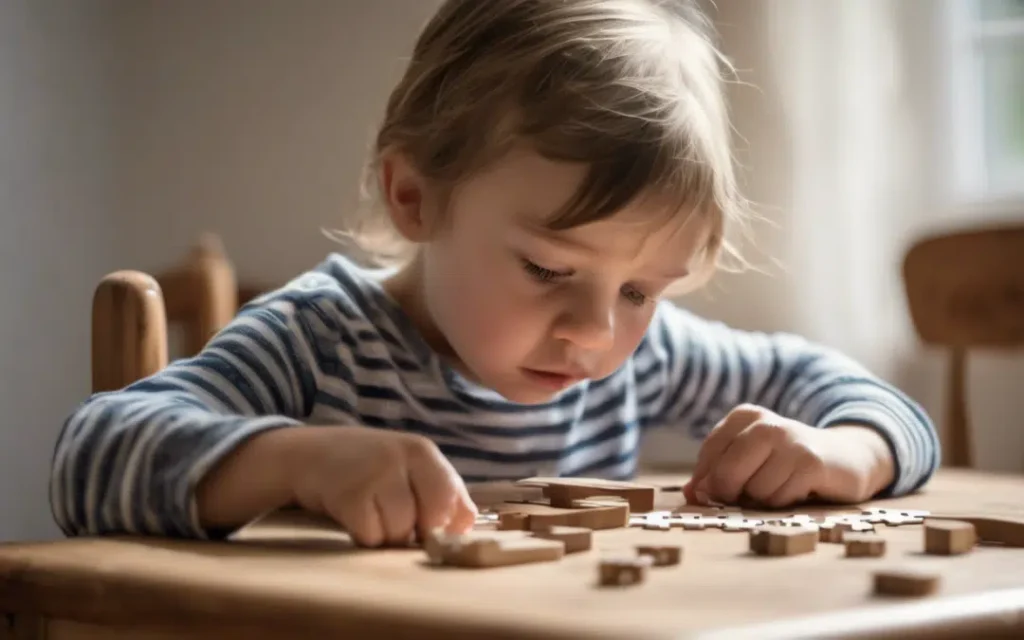
As a parent, you watch your toddler’s every move—those wobbly first steps, the gleeful babbling, the way they stack blocks or giggle at a peekaboo game. Each milestone feels like a mini victory, a sign your little one is growing and thriving. But what happens when those milestones don’t come as expected? When does a missed step or a quiet demeanor signal something more than just a quirky personality?
Recognizing the early signs of developmental delay in toddlers can feel like navigating a maze, but understanding what to look for can make all the difference. In this guide, we’ll walk you through the signs, share stories from real parents, and offer actionable advice to help you support your child’s growth. Let’s dive in with curiosity, care, and a commitment to clarity.
What Are Developmental Delays?
Developmental delays occur when a child doesn’t meet expected milestones in areas like speech, motor skills, social interaction, or cognitive development at the typical age. These delays can range from mild, where a child catches up with time, to more significant, requiring professional intervention.
According to the Centers for Disease Control and Prevention (CDC), about 1 in 6 children in the U.S. has a developmental delay or disability. The key is early detection—spotting the signs early can lead to interventions that significantly improve outcomes. Think of it like catching a small leak before it floods the house: addressing delays early can prevent bigger challenges down the road.
Delays can affect one or multiple areas of development, such as physical (gross and fine motor skills), communication (speech and language), cognitive (thinking and problem-solving), or social-emotional (interacting with others). Every child develops at their own pace, but consistent patterns of delay might suggest a need for closer attention. Let’s explore the major developmental areas and their early warning signs through a parent’s lens.
Physical Development: When Movement Feels Off
Physical milestones—like crawling, walking, or grasping toys—are often the first things parents notice. When my friend Sarah’s son, Liam, was 18 months old, she noticed he wasn’t walking independently. While other toddlers at the park were running, Liam clung to furniture or crawled. At first, Sarah chalked it up to him being a “late bloomer,” but her pediatrician suggested a closer look. Liam’s story isn’t uncommon. Physical delays might show up as:
- Gross Motor Delays: Not sitting by 9 months, not crawling by 12 months, or not walking by 18 months. The American Academy of Pediatrics (AAP) emphasizes that these milestones are benchmarks, not strict rules, but significant delays warrant attention.
- Fine Motor Delays: Difficulty grasping small objects, not using a pincer grip (thumb and forefinger) by 12 months, or struggling to scribble by 2 years. For example, if your toddler isn’t stacking blocks or holding a spoon by age 2, it might be worth discussing with a professional.
- Coordination Issues: Frequent clumsiness or trouble with balance beyond what’s typical for their age.
If you notice these signs, don’t panic. Sarah took Liam to a physical therapist, who introduced playful exercises to strengthen his muscles. By age 2, Liam was toddling confidently. Early intervention, like physical therapy, can work wonders, and resources like Zero to Three offer tools to track milestones.
Speech and Language: When Words Don’t Come
Language development is another area where delays can stand out. I remember chatting with a mom at a playgroup whose daughter, Mia, was 2 but barely spoke. While other kids babbled sentences, Mia used gestures and grunts. Her mom, Jenna, felt a mix of worry and hope, wondering if Mia was just “taking her time.” Speech and language delays can show up as:
- Limited Vocabulary: Fewer than 50 words by age 2 or no two-word phrases (like “want juice”) by 30 months. The National Institute on Deafness and Other Communication Disorders (NIDCD) notes that vocabulary growth is a key indicator.
- Difficulty Understanding: Not responding to simple instructions like “come here” or “point to the dog” by 18 months.
- Unclear Speech: If a toddler’s speech is mostly unintelligible to strangers by age 3, it might signal a delay.
Jenna worked with a speech therapist who used games and songs to boost Mia’s vocabulary. By age 3, Mia was chattering away. If you’re concerned, tools like the ASHA’s milestone checklist can help you gauge your child’s progress.
Cognitive Development: When Thinking Seems Slow
Cognitive delays involve challenges with problem-solving, memory, or understanding concepts. Picture a toddler who doesn’t seem curious about their environment or struggles with simple puzzles. My cousin’s son, Ethan, was 2.5 and showed little interest in toys or exploring. While other kids were sorting shapes, Ethan seemed disengaged. Cognitive delays might include:
- Lack of Curiosity: Not exploring objects or showing interest in new things by 18 months.
- Difficulty with Problem-Solving: Struggling with simple tasks like fitting shapes into a sorter by age 2.
- Memory Challenges: Not recognizing familiar objects or routines by age 3.
Ethan’s parents consulted a developmental pediatrician, who recommended play-based activities to spark curiosity. The Child Mind Institute suggests that cognitive delays can sometimes be linked to sensory processing issues or environmental factors, so a thorough evaluation is key.
Social-Emotional Development: When Connection Feels Distant
Social-emotional delays can be harder to spot but are just as critical. These involve how a toddler interacts with others or manages emotions. I once met a dad, Mark, whose son, Noah, avoided eye contact and rarely smiled at others, even family. By age 2, Noah preferred playing alone and seemed overwhelmed at gatherings. Signs to watch for include:
- Limited Social Interaction: Not smiling back, avoiding eye contact, or not showing interest in other children by 18 months.
- Emotional Regulation Issues: Frequent, intense tantrums beyond what’s typical or seeming overly withdrawn by age 2.
- Lack of Pretend Play: Not engaging in simple imaginative play, like pretending to feed a doll, by age 3.
Noah’s family worked with a therapist who used play therapy to build his social skills. The Autism Speaks website offers insights into social-emotional delays, especially if autism spectrum disorder (ASD) is a concern.
Comparison Table: Typical vs. Potential Delay Indicators
| Developmental Area | Typical Milestones (by Age 2) | Potential Delay Indicators |
|---|---|---|
| Physical | Walks independently, climbs stairs, stacks blocks | Not walking by 18 months, no pincer grip, frequent clumsiness |
| Speech/Language | Says 50+ words, uses two-word phrases | Fewer than 50 words, no phrases, unintelligible speech |
| Cognitive | Solves simple puzzles, shows curiosity | No interest in toys, struggles with basic tasks |
| Social-Emotional | Smiles at others, engages in pretend play | Avoids eye contact, no imaginative play, overly withdrawn |
This table simplifies complex behaviors, but it’s a starting point. Always consult a professional for a full assessment.
Risk Factors and Causes: What’s Behind the Delay?
Developmental delays can stem from various causes, and understanding them can help you take action. Risk factors include:
- Genetics: Conditions like Down syndrome or fragile X syndrome can cause delays. The National Institutes of Health (NIH) has resources on genetic testing.
- Premature Birth: Babies born before 37 weeks are at higher risk, as noted by the March of Dimes.
- Environmental Factors: Lack of stimulation, neglect, or exposure to toxins like lead can play a role.
- Medical Conditions: Hearing loss, vision issues, or neurological conditions like cerebral palsy can contribute.
Sometimes, the cause isn’t clear, and that’s okay. The goal is to focus on support, not blame. For instance, Sarah learned Liam’s delay was linked to low muscle tone, a common and treatable issue.
What to Do If You Suspect a Delay
If something feels off, trust your instincts. Here’s a step-by-step guide:
- Track Milestones: Use tools like the CDC’s Milestone Tracker app to monitor your child’s progress.
- Talk to Your Pediatrician: Share specific examples, like “My child isn’t pointing at objects by 18 months.” Be clear and persistent.
- Seek Early Intervention: Programs like Early Intervention (EI) offer free or low-cost evaluations for kids under 3 in the U.S.
- Explore Therapies: Speech, occupational, or physical therapy can address specific delays. Play-based approaches often feel like fun, not work.
- Build a Support Network: Connect with other parents through groups like Parent to Parent.
When Jenna noticed Mia’s speech delay, she started with a pediatrician visit, which led to a referral for speech therapy. The process felt daunting, but the support made it manageable.
The Emotional Journey for Parents
Spotting a delay can stir a whirlwind of emotions—worry, guilt, even denial. I remember Sarah saying, “I kept thinking, ‘Did I do something wrong?’” You’re not alone in those feelings. It’s normal to grieve the “typical” path you imagined for your child. But here’s the truth: delays don’t define your child’s potential. With support, many kids catch up or find their own unique way to shine. Connecting with other parents or a counselor can help you process these emotions. Websites like Understood.org offer parent forums and emotional support resources.
FAQ: Common Questions About Developmental Delays
Q: How do I know if it’s a delay or just my child’s personality?
A: Every child is unique, but consistent delays across multiple milestones or significant gaps compared to peers may suggest a delay. Check with a pediatrician for clarity.
Q: Can a child outgrow a developmental delay?
A: Yes, some kids catch up naturally, especially with early intervention. For example, mild speech delays often resolve with therapy by age 4.
Q: What if my pediatrician dismisses my concerns?
A: Trust your gut. Seek a second opinion or request a referral to a developmental specialist. You know your child best.
Q: Are developmental delays always linked to autism?
A: No, delays can have many causes, from temporary issues to medical conditions. Autism is one possibility, but a professional evaluation is needed for diagnosis.
Q: How can I support my toddler at home?
A: Engage in play-based activities, read together, encourage exploration, and follow therapy recommendations. Consistency is key.
Conclusion: Embracing the Journey with Hope
Recognizing early signs of developmental delay in toddlers can feel overwhelming, but it’s also a powerful step toward helping your child thrive. From physical milestones like walking to social connections like smiling at a friend, every area of development tells a story about your child’s growth. By staying observant, trusting your instincts, and seeking support, you’re already doing the most important work: advocating for your child. Stories like Liam’s, Mia’s, and Noah’s remind us that delays are often just detours, not dead ends. With early intervention, love, and patience, many children go on to surprise us with their resilience and unique strengths.
Take it one step at a time. Start by tracking milestones, talking to your pediatrician, and exploring resources like early intervention programs. Connect with other parents to share the load and celebrate the wins, big and small. Your toddler’s journey is theirs alone, and you’re their biggest cheerleader. Keep nurturing their potential, and know that you’re not alone on this path.




